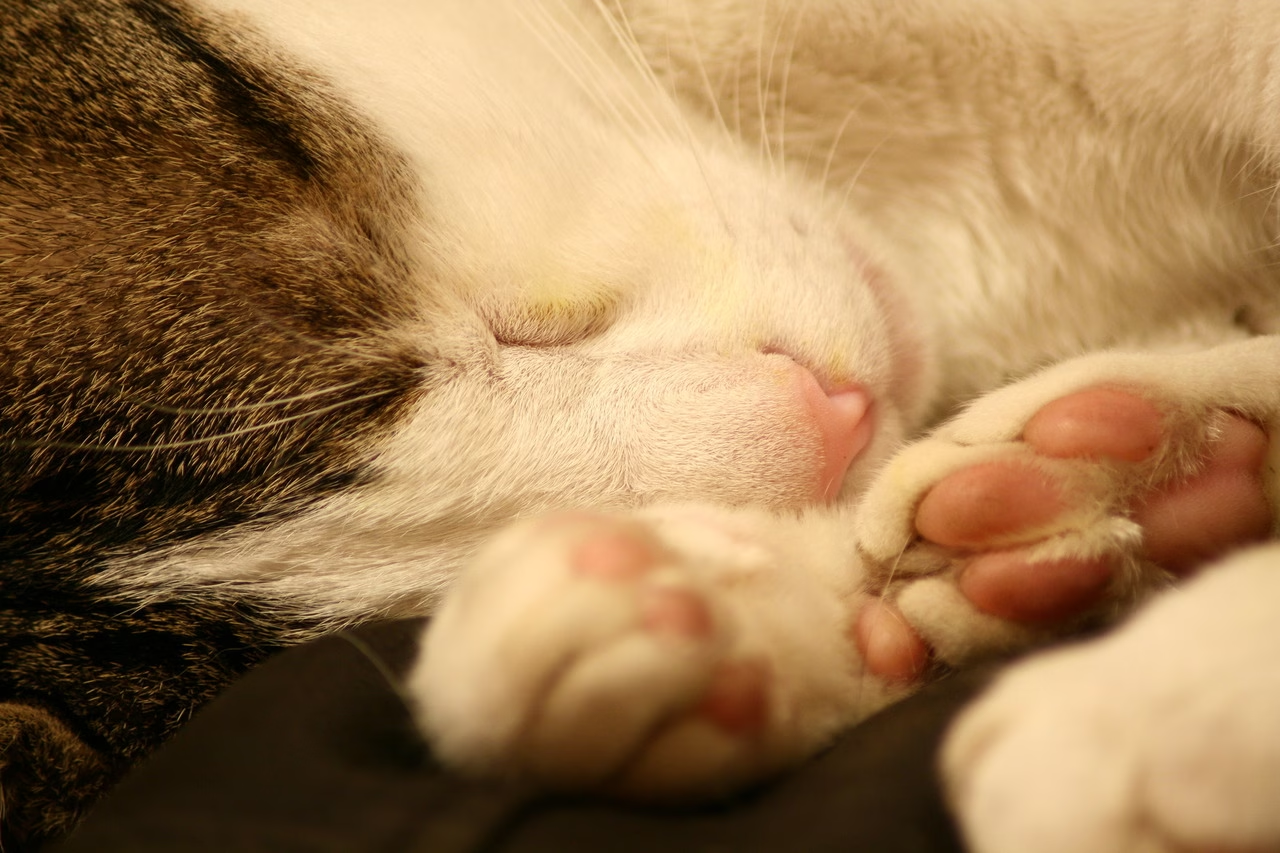Introduction
Cats are renowned for their love of sleep, often spending 12-16 hours a day snoozing. But what happens during those hours of rest? Do cats dream as humans do? Research suggests that cats indeed experience dreams, and their sleep behavior offers fascinating insights into their minds and daily experiences.
1. The Science Behind Cat Sleep
Cats, like humans, experience two primary stages of sleep:
✔️ Non-REM Sleep: This is the lighter stage of sleep where cats are resting but still aware of their surroundings. You might notice their ears twitch at sounds or their tails flick slightly.
✔️ REM (Rapid Eye Movement) Sleep: During this deeper stage, cats’ brains become highly active. Their eyes move beneath their eyelids, and you may observe twitching whiskers or paws. This is the stage where dreams are believed to occur.
2. What Do Cats Dream About?
While we can’t ask our feline friends about their dreams, scientists speculate that cats dream about their daily activities.
✔️ Hunting and Playing: Cats may reenact chasing toys or stalking prey in their dreams. This is likely rooted in their predatory instincts.
✔️ Interactions: Dreams may involve their interactions with humans, other animals, or fellow cats. A cat’s dream might include a favorite cuddle session or a playful encounter.
✔️ Memories: Cats might replay significant events, such as exploring a new environment or discovering a cozy hiding spot.
3. Signs Your Cat is Dreaming
How can you tell if your cat is dreaming? Look for these signs during REM sleep:
✔️ Twitching Paws or Whiskers: Gentle movements indicate activity in the brain.
✔️ Vocalizations: Soft meows, chirps, or purrs may occur.
✔️ Rapid Eye Movement: Quick eye movements under closed lids are a hallmark of dreaming.
4. Do Cats Have Nightmares?
Just like humans, cats can experience nightmares. Stressful events, such as a trip to the vet or an encounter with an aggressive animal, may manifest in unsettling dreams. If your cat wakes suddenly and seems distressed, it’s possible they were having a bad dream. Offering comfort and a calm environment can help.
5. How to Promote Healthy Sleep for Your Cat
Ensuring your cat gets quality sleep is crucial for their health and well-being. Here are some tips:
- Provide a Comfortable Sleeping Spot: Cats love cozy, quiet spaces. Consider a soft bed or a warm blanket.
- Engage in Play Before Bed: Burning off energy through interactive play helps your cat settle down for restful sleep.
- Maintain a Routine: Cats thrive on consistency. Regular feeding and playtimes contribute to better sleep patterns.
- Create a Safe Environment: Reduce loud noises and potential stressors to ensure uninterrupted rest.
6. Affiliate Recommendations for Better Cat Sleep
Enhance your cat’s sleep experience with these products:
🛒 Cozy Cat Beds: Top-rated Cat Bed.
🛒 Calming Treats: Help reduce stress with Calming Treats.
Conclusion
Cats’ sleep habits are as fascinating as their waking behaviors. From dreaming of playful hunts to experiencing restful snoozes, their sleep patterns reveal much about their instincts and daily lives. By understanding and supporting your cat’s sleep needs, you can ensure they remain happy, healthy, and well-rested.
📌 Have you noticed your cat dreaming? Share your experiences in the comments below!

